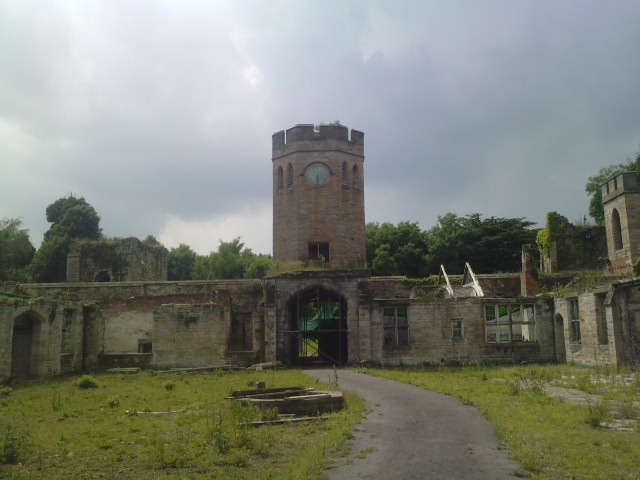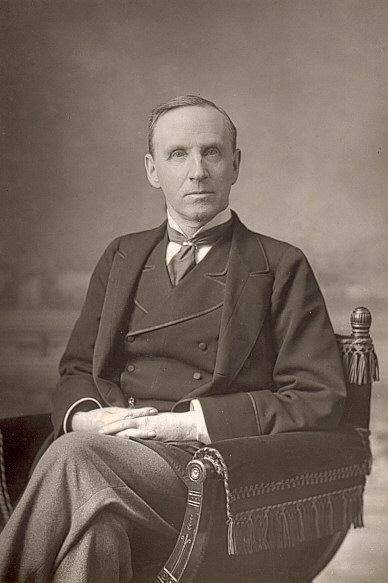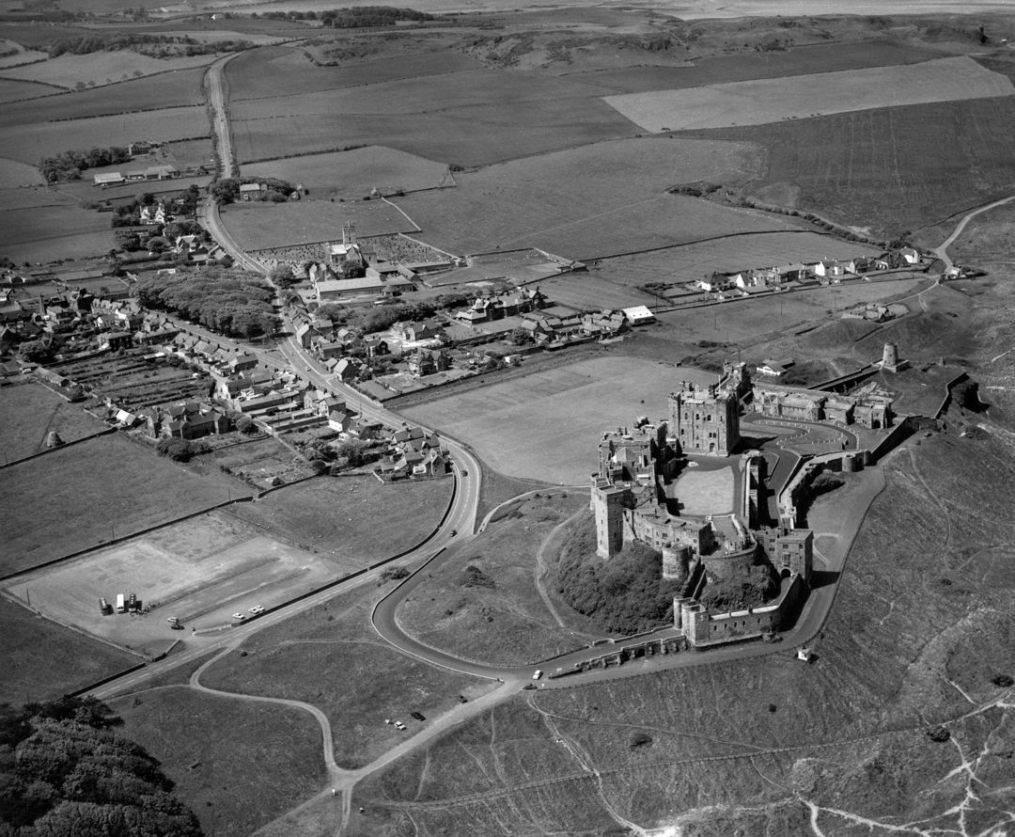|
Sir Thomas Liddell, 1st Baronet
Captain Sir Thomas Liddell, 1st Baronet (1578–1652) was an English politician, a member of the Liddell family which monopolized the local government of the North of England during the 16th and 17th centuries. He was one of the leading supporters of the Royalist cause in the English Civil War. Family Liddell was born in 1578, the son of Thomas Liddell (d.1619) and his wife Margaret Watson, daughter of John Watson, Alderman of Newcastle. His paternal grandfather, Thomas Liddell of Newcastle-upon-Tyne (d.1577) was a merchant adventurer who had served as Sheriff of Newcastle in 1563-64 and Mayor of Newcastle in 1572–3. His father, Thomas (d.1619), also a merchant, made vast profits from corn and coal and bought Ravensworth Castle in 1607 and also served as Sheriff of Newcastle in 1592-93 and Mayor of Newcastle in 1597 and 1609. Politics and the Civil War A Catholic Recusant, he succeeded to Ravensworth Castle in 1615 on the death of his father. He also owned the Redheugh es ... [...More Info...] [...Related Items...] OR: [Wikipedia] [Google] [Baidu] |
Captain (British Army)
Captain (Capt) is a junior officer rank of the British Army and Royal Marines and in both services it ranks above lieutenant and below major with a NATO ranking code of OF-2. The rank is equivalent to a lieutenant in the Royal Navy and to a flight lieutenant in the Royal Air Force. The rank of captain in the Royal Navy is considerably more senior (equivalent to the Army/RM rank of colonel) and the two ranks should not be confused. In the 21st-century British Army, captains are often appointed to be second-in-command (2IC) of a company or equivalent sized unit of up to 120 soldiers. History A rank of second captain existed in the Ordnance at the time of the Battle of Waterloo. From 1 April 1918 to 31 July 1919, the Royal Air Force maintained the junior officer rank of captain. RAF captains had a rank insignia based on the two bands of a naval lieutenant with the addition of an eagle and crown above the bands. It was superseded by the rank of flight lieutenant on the followin ... [...More Info...] [...Related Items...] OR: [Wikipedia] [Google] [Baidu] |
Newcastle-upon-Tyne (UK Parliament Constituency)
Newcastle-upon-Tyne was a borough constituency, parliamentary borough in the county of Northumberland of the House of Commons of England from 1283 to 1706, then of the House of Commons of Great Britain from 1707 to 1800 and of the House of Commons of the United Kingdom from 1801 to 1918. It returned two Member of Parliament (United Kingdom), Members of Parliament (MPs), elected by the Plurality-at-large voting, bloc vote system. Newcastle first sent Members to Parliament in 1283, although it was not always possible to act upon the writ of summons, which was disregarded on at least four occasions (1315, 1327, 1332 and 1337) because of warfare with the Scots. The constituency was abolished in 1918, being split into four divisions; Newcastle upon Tyne Central (UK Parliament constituency), Newcastle-upon-Tyne Central, Newcastle upon Tyne East (UK Parliament constituency), Newcastle-upon-Tyne East, Newcastle upon Tyne North (UK Parliament constituency), Newcastle-upon-Tyne North and N ... [...More Info...] [...Related Items...] OR: [Wikipedia] [Google] [Baidu] |
Bamburgh Castle
Bamburgh Castle is a castle on the northeast coast of England, by the village of Bamburgh in Northumberland. It is a Grade I listed building. The site was originally the location of a Celtic Brittonic fort known as ''Din Guarie'' and may have been the capital of the kingdom of Bernicia from its foundation in 420 to 547. In that latter year, it was captured by King Ida of Bernicia. After passing between the Britons and the Anglo-Saxons three times, the fort came under Anglo-Saxon control in 590. The fort was destroyed by Vikings in 993, and the Normans later built a new castle on the site, which forms the core of the present one. After a revolt in 1095 supported by the castle's owner, it became the property of the English monarch. In the 17th century, financial difficulties led to the castle deteriorating, but it was restored by various owners during the 18th and 19th centuries. It was finally bought by the Victorian era industrialist William Armstrong, who completed its resto ... [...More Info...] [...Related Items...] OR: [Wikipedia] [Google] [Baidu] |
Charles I Of England
Charles I (19 November 1600 – 30 January 1649) was King of England, Scotland, and Ireland from 27 March 1625 until Execution of Charles I, his execution in 1649. He was born into the House of Stuart as the second son of King James VI of Scotland, but after his father inherited the English throne in 1603, he moved to England, where he spent much of the rest of his life. He became heir apparent to the kingdoms of England, Scotland, and Ireland in 1612 upon the death of his elder brother, Henry Frederick, Prince of Wales. An unsuccessful and unpopular attempt to marry him to the Spanish Habsburg princess Maria Anna of Spain, Maria Anna culminated in an eight-month visit to Spain in 1623 that demonstrated the futility of the marriage negotiation. Two years later, he married the House of Bourbon, Bourbon princess Henrietta Maria of France. After his 1625 succession, Charles quarrelled with the Parliament of England, English Parliament, which sought to curb his royal prerogati ... [...More Info...] [...Related Items...] OR: [Wikipedia] [Google] [Baidu] |
Major (British Army)
Major (Maj) is a military rank which is used by both the British Army and Royal Marines. The rank is superior to captain and subordinate to lieutenant colonel. The insignia for a major is a crown. The equivalent rank in the Royal Navy is lieutenant commander, and squadron leader in the Royal Air Force. History By the time of the Napoleonic wars, an infantry battalion usually had two majors, designated the "senior major" and the "junior major". The senior major effectively acted as second-in-command and the majors often commanded detachments of two or more companies split from the main body. The second-in-command of a battalion or regiment is still a major. File:British-Army-Maj(1856-1867)-Collar Insignia.svg, 1856 to 1867 major's collar rank insignia File:British-Army-Maj(1867-1880)-Collar Insignia.svg, 1867 to 1880 major's collar rank insignia File:British&Empire-Army-Maj(1881-1902).svg, 1881 to 1902 major's shoulder rank insignia During World War I, majors wore the follow ... [...More Info...] [...Related Items...] OR: [Wikipedia] [Google] [Baidu] |
Henry Vane The Younger
Sir Henry Vane (baptised 26 March 161314 June 1662), often referred to as Harry Vane and Henry Vane the Younger to distinguish him from his father, Henry Vane the Elder, was an English politician, statesman, and colonial governor. He was briefly present in North America, serving one term as the governor of the Massachusetts Bay Colony, and supported the creation of Roger Williams' Rhode Island Colony and Harvard College. A proponent of religious tolerance, as governor, he defended Anne HutchinsonMoore, p. 318 and her right to teach religious topics in her home which put him in direct conflict with the Puritan leaders in the Massachusetts Colony. He returned to England after losing re-election and eventually, Mrs. Hutchinson was banned from the colony. He was a leading Parliamentarian during the English Civil War and worked closely with Oliver Cromwell. He played no part in the execution of King Charles I, and refused to take oaths that expressed approval of the act. Vane se ... [...More Info...] [...Related Items...] OR: [Wikipedia] [Google] [Baidu] |
Arthur Haslerig
Sir Arthur Haselrig, 2nd Baronet (1601 – 7 January 1661) was a leader of the Parliamentary opposition to Charles I and one of the Five Members whose attempted arrest sparked the 1642–1646 First English Civil War. He held various military and political posts during the 1639–1651 Wars of the Three Kingdoms but became an opponent of Oliver Cromwell during the Protectorate. In 1660, his actions inadvertently helped restore Charles II to the throne; unlike many senior Parliamentary leaders, his life was spared but he was confined to the Tower of London, where he died on 7 January 1661. Life Haselrig was the eldest son of Sir Thomas Hesilrige, 1st Baronet (alternative spellings "Heselrig" and "Haselrigge"), of Noseley Hall, Noseley, Leicestershire, and of Frances Gorges, daughter of Sir William Gorges, of Alderton, Northamptonshire. From an early age he imbibed strong puritanical principles and showed a special antagonism towards Archbishop Laud. Short and Long Parliaments ... [...More Info...] [...Related Items...] OR: [Wikipedia] [Google] [Baidu] |
Siege Of Newcastle
The siege of Newcastle (3 February 1644 – 27 October 1644) occurred during the First English Civil War, when a Covenanter army under the command of Lord General Alexander Leslie, 1st Earl of Leven besieged the Royalist garrison under Sir John Marlay, the city's governor. Eventually, the Covenanters took the city of Newcastle upon Tyne by storm, and the Royalist garrison who still held castle keep surrendered on terms. This was not the first time that Newcastle upon Tyne had changed hands during the Wars of the Three Kingdoms. The Scots had occupied the city during the Second Bishops’ War in 1640. Invasion and siege A Covenanter army from Scotland under the command of Lord General Leslie crossed into England in January 1644. As Leslie moved his army south he left six regiments under the direction of Lieutenant General James Livingstone, 1st Earl of Callander, to lay siege to the city of Newcastle upon Tyne beginning 3 February (after the town was formally asked t ... [...More Info...] [...Related Items...] OR: [Wikipedia] [Google] [Baidu] |
Battle Of Edgehill
The Battle of Edgehill (or Edge Hill) was a pitched battle of the First English Civil War. It was fought near Edge Hill and Kineton in southern Warwickshire on Sunday, 23 October 1642. All attempts at constitutional compromise between King Charles and Parliament broke down early in 1642. Both the King and Parliament raised large armies to gain their way by force of arms. In October, at his temporary base near Shrewsbury, the King decided to march to London in order to force a decisive confrontation with Parliament's main army, commanded by the Earl of Essex. Late on 22 October, both armies unexpectedly found the enemy to be close by. The next day, the Royalist army descended from Edge Hill to force battle. After the Parliamentarian artillery opened a cannonade, the Royalists attacked. Both armies consisted mostly of inexperienced and sometimes ill-equipped troops. Many men from both sides fled or fell out to loot enemy baggage, and neither army was able to gain a decisiv ... [...More Info...] [...Related Items...] OR: [Wikipedia] [Google] [Baidu] |
Aldermen
An alderman is a member of a municipal assembly or council in many jurisdictions founded upon English law. The term may be titular, denoting a high-ranking member of a borough or county council, a council member chosen by the elected members themselves rather than by popular vote, or a council member elected by voters. Etymology The title is derived from the Old English title of ''ealdorman'', literally meaning "elder man", and was used by the chief nobles presiding over shires. Similar titles exist in some Germanic countries, such as the Swedish language ', the Danish, Low German language ', and West Frisian language ', the Dutch language ', the (non-Germanic) Finnish language ' (a borrowing from the Germanic Swedes next door), and the High German ', which all mean "elder man" or "wise man". Usage by country Australia Many local government bodies used the term "alderman" in Australia. As in the way local councils have been modernised in the United Kingdom and Ireland, the term a ... [...More Info...] [...Related Items...] OR: [Wikipedia] [Google] [Baidu] |
Commission Of Array
A commission of array was a commission given by English sovereigns to officers or gentry in a given territory to muster and array the inhabitants and to see them in a condition for war, or to put soldiers of a country in a condition for military service. The term arrayers is used in some ancient English statutes, for an officer who had a commission of array. History Commissions of array developed from the ancient obligation of all free men to defend their tribal lands. Commissioners were usually experienced soldiers, appointed by the crown to array able bodied men from each shire. By the time of the Wars of the Roses, conscript levies were less important than troops raised by indenture. Medieval examples Commission from Glendower rebellion 1403 A Commission of Array was established in October 1403 by King Henry IV by letters patent to raise an army to resist the Welsh rebellion of Owain Glyndŵr, who had recently captured Newport Castle. The commission issued by the king at Gl ... [...More Info...] [...Related Items...] OR: [Wikipedia] [Google] [Baidu] |
Cavalier
The term Cavalier () was first used by Roundheads as a term of abuse for the wealthier royalist supporters of King Charles I and his son Charles II of England during the English Civil War, the Interregnum, and the Restoration (1642 – ). It was later adopted by the Royalists themselves. Although it referred originally to political and social attitudes and behaviour, of which clothing was a very small part, it has subsequently become strongly identified with the fashionable clothing of the court at the time. Prince Rupert, commander of much of Charles I's cavalry, is often considered to be an archetypal Cavalier. Etymology Cavalier derives from the same Latin root as the Italian word and the French word (as well as the Spanish word ), the Vulgar Latin word '' caballarius'', meaning 'horseman'. Shakespeare used the word ''cavaleros'' to describe an overbearing swashbuckler or swaggering gallant in Henry IV, Part 2 (c. 1596–1599), in which Robert Shallow says "I'll drink ... [...More Info...] [...Related Items...] OR: [Wikipedia] [Google] [Baidu] |




